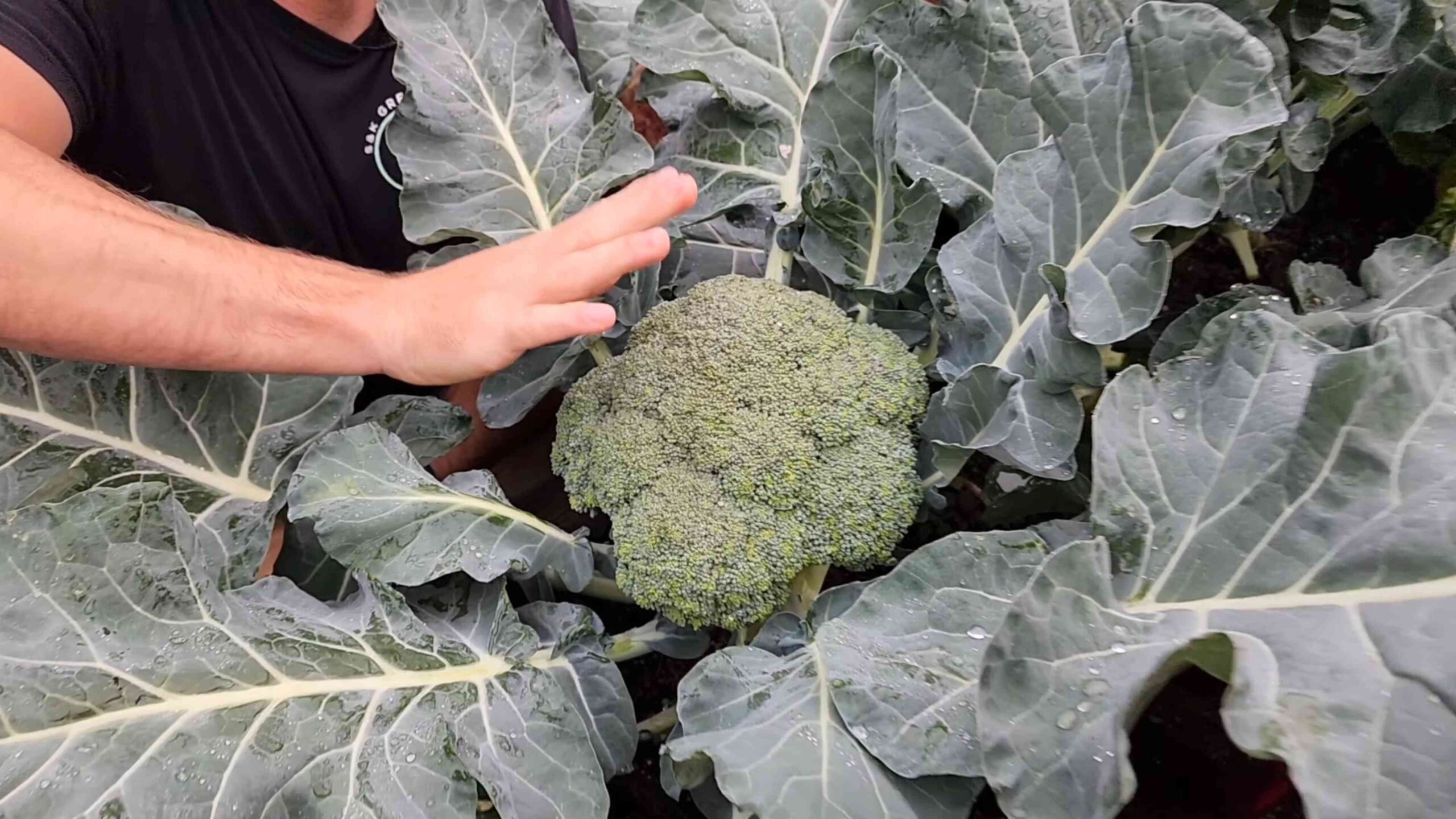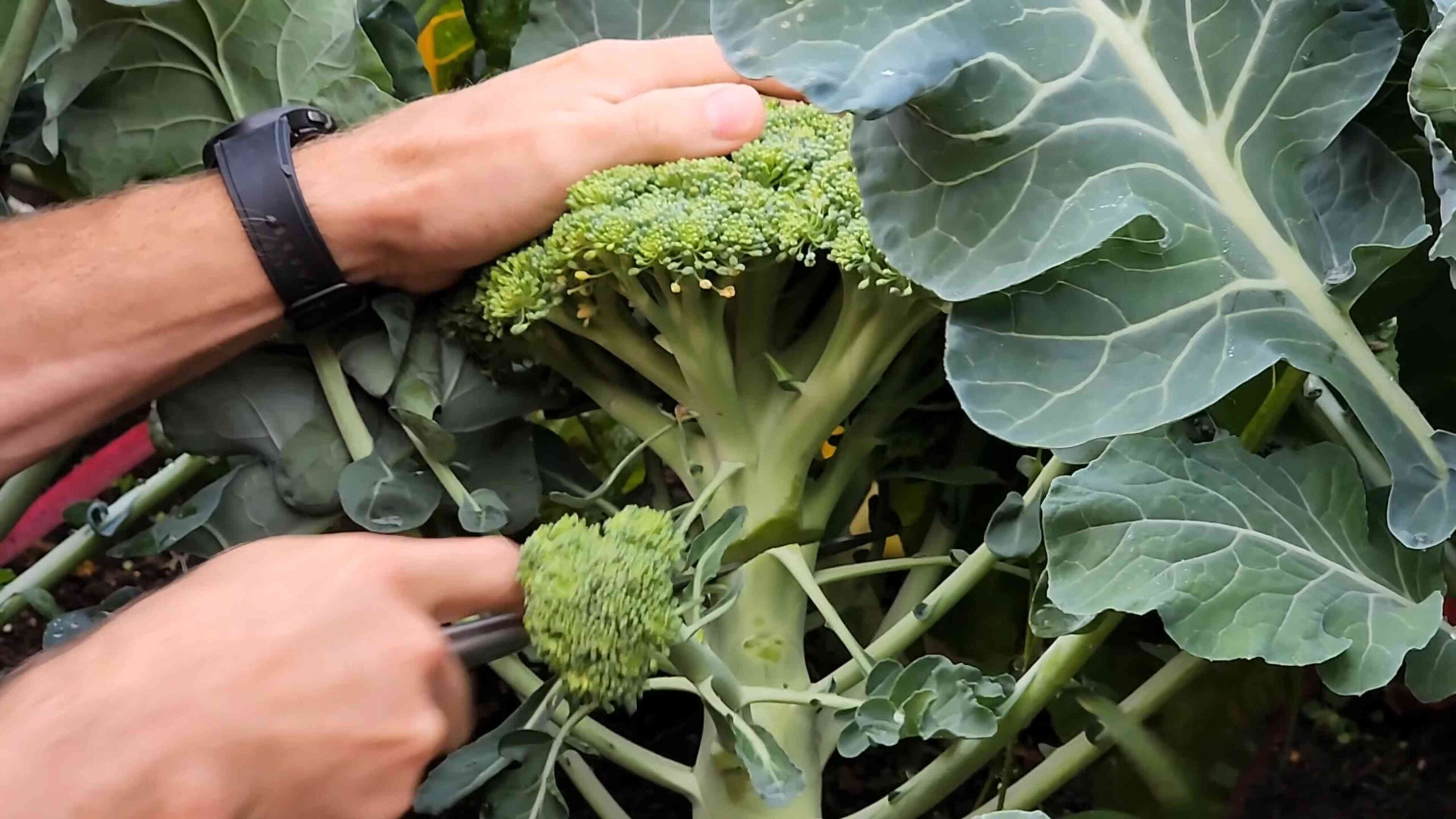Growing broccoli at home can seem daunting, but trust me, it’s more rewarding than you might think! Imagine stepping into your backyard and harvesting fresh, vibrant broccoli heads for dinner – a taste far superior to anything you’ll find at the grocery store. For centuries, broccoli has been a staple in Mediterranean diets, prized for its nutritional value and unique flavor. From ancient Roman gardens to modern-day vegetable patches, this cruciferous vegetable has nourished generations.
But let’s be honest, who has the time (or the green thumb, for that matter!) to dedicate hours to complicated gardening techniques? That’s where this DIY guide comes in. I’m going to share some simple, effective tricks and hacks that will make growing broccoli at home a breeze, even if you’re a complete beginner. We’ll tackle common challenges like pests, soil preparation, and watering schedules, all with easy-to-follow instructions and readily available materials.
Why do you need these DIY tricks? Because store-bought broccoli often lacks the freshness and flavor of homegrown varieties. Plus, you have complete control over what goes into your garden, ensuring a healthy and organic harvest for you and your family. So, grab your gardening gloves, and let’s get started on this exciting journey to growing your own delicious broccoli!

Growing Broccoli at Home: A Beginner’s Guide
Hey there, fellow gardening enthusiasts! I’m so excited to share my experience with growing broccoli at home. It’s surprisingly rewarding, and nothing beats the taste of freshly harvested broccoli from your own garden. Don’t be intimidated – even if you’re a complete beginner, you can absolutely do this! I’ll walk you through every step, from choosing the right variety to dealing with pesky pests.
Choosing the Right Broccoli Variety
Before you even think about planting, you need to pick the right broccoli variety for your climate and growing season. Here’s a quick rundown of some popular choices:
* ‘Waltham 29’: This is a classic, reliable variety that’s known for its good flavor and heat tolerance. It’s a great choice for beginners.
* ‘DiCicco’: This heirloom variety produces smaller main heads, but it’s excellent for side shoots, giving you a longer harvest.
* ‘Green Magic’: If you’re looking for early maturity, ‘Green Magic’ is a fantastic option. It produces uniform, tight heads.
* ‘Calabrese’: Another popular choice, ‘Calabrese’ is known for its large, dark green heads.
* ‘Purple Sprouting’: For something a little different, try ‘Purple Sprouting’ broccoli. It produces beautiful purple shoots that are delicious and nutritious.
Consider your local climate and the length of your growing season when making your decision. Check with your local nursery or garden center for recommendations specific to your area.
Starting Broccoli Seeds Indoors (Optional but Recommended)
While you can direct sow broccoli seeds, I highly recommend starting them indoors. This gives them a head start and protects them from early-season pests and unpredictable weather.
* When to Start: Start your seeds about 6-8 weeks before the last expected frost in your area.
* Materials You’ll Need:
* Seed starting trays or small pots
* Seed starting mix (a light, well-draining mix is essential)
* Broccoli seeds
* Spray bottle
* Grow lights (optional, but highly recommended)
* Heat mat (optional, but helpful for germination)
Step-by-Step Instructions:
1. Prepare Your Seed Starting Trays: Fill your seed starting trays or pots with seed starting mix. Gently tap the trays to settle the mix.
2. Sow the Seeds: Make a small indentation (about 1/4 inch deep) in the center of each cell or pot. Place 2-3 broccoli seeds in each indentation. Cover the seeds with a thin layer of seed starting mix.
3. Water Gently: Use a spray bottle to gently moisten the soil. Avoid overwatering, as this can lead to damping off (a fungal disease that can kill seedlings).
4. Provide Warmth and Light: Place the trays on a heat mat (if using) and under grow lights. If you don’t have grow lights, place the trays in a sunny window. However, be aware that seedlings grown in windows often become leggy (tall and spindly) due to insufficient light.
5. Maintain Moisture: Keep the soil consistently moist, but not soggy. Check the soil daily and water as needed.
6. Thin the Seedlings: Once the seedlings have their first true leaves (the second set of leaves), thin them to one seedling per cell or pot. Choose the strongest, healthiest-looking seedling and snip off the others at the soil line. Don’t pull them out, as this can disturb the roots of the remaining seedling.
Preparing Your Garden Bed
Broccoli needs a sunny spot with well-drained soil. It also prefers a slightly acidic to neutral soil pH (around 6.0 to 7.0).
* Sunlight: Broccoli needs at least 6 hours of sunlight per day.
* Soil: The soil should be rich in organic matter and well-draining.
* pH: Test your soil pH and amend it if necessary. You can use lime to raise the pH or sulfur to lower it.
Step-by-Step Instructions:
1. Choose a Sunny Location: Select a spot in your garden that receives at least 6 hours of sunlight per day.
2. Prepare the Soil: Remove any weeds, rocks, and debris from the area.
3. Amend the Soil: Amend the soil with compost or other organic matter to improve drainage and fertility. I like to add a generous amount of composted manure.
4. Till or Dig: Till the soil to a depth of at least 12 inches. If you prefer not to till, you can use a garden fork to loosen the soil.
5. Smooth the Surface: Rake the soil smooth and level.
Transplanting Broccoli Seedlings
Once your seedlings have several sets of true leaves and the weather has warmed up (after the last expected frost), it’s time to transplant them into your garden.
* Hardening Off: Before transplanting, you need to harden off your seedlings. This means gradually acclimating them to outdoor conditions. Start by placing the trays outside for a few hours each day, gradually increasing the amount of time they spend outdoors over the course of a week.
* Spacing: Space your broccoli plants 18-24 inches apart in rows that are 24-36 inches apart.
Step-by-Step Instructions:
1. Water the Seedlings: Water your seedlings thoroughly before transplanting.
2. Dig Holes: Dig holes in your prepared garden bed that are slightly larger than the root balls of your seedlings.
3. Remove Seedlings from Trays: Gently remove the seedlings from their trays or pots. Be careful not to damage the roots.
4. Plant the Seedlings: Place the seedlings in the holes and backfill with soil. Make sure the top of the root ball is level with the surrounding soil.
5. Water Thoroughly: Water the newly transplanted seedlings thoroughly.
6. Mulch: Apply a layer of mulch around the plants to help retain moisture, suppress weeds, and regulate soil temperature. I like to use straw or wood chips.
Caring for Your Broccoli Plants
Broccoli needs consistent watering, fertilization, and pest control to thrive.
* Watering: Water your broccoli plants regularly, especially during dry periods. Aim for about 1 inch of water per week.
* Fertilizing: Fertilize your broccoli plants every 2-3 weeks with a balanced fertilizer. You can also side-dress them with compost or composted manure.
* Weeding: Keep your garden bed free of weeds. Weeds compete with broccoli plants for nutrients and water.
* Pest Control: Broccoli is susceptible to several pests, including cabbage worms, aphids, and flea beetles.
Step-by-Step Instructions:
1. Water Regularly: Water your broccoli plants deeply and regularly, especially during hot, dry weather. Water at the base of the plants to avoid wetting the foliage, which can lead to fungal diseases.
2. Fertilize Regularly: Fertilize your broccoli plants every 2-3 weeks with a balanced fertilizer. Follow the instructions on the fertilizer package.
3. Weed Regularly: Remove weeds from your garden bed regularly. You can hand-pull weeds or use a hoe.
4. Monitor for Pests: Inspect your broccoli plants regularly for pests. Look for signs of damage, such as holes in the leaves or sticky residue.
5. Control Pests: If you find pests, take action to control them. You can use organic pest control methods, such as insecticidal soap or neem oil. You can also hand-pick pests off the plants. For cabbage worms, Bacillus thuringiensis (Bt) is a very effective organic control.
Dealing with Common Broccoli Pests and Diseases
Broccoli, like any garden vegetable, can be susceptible to pests and diseases. Here’s a quick guide to some common problems and how to deal with them:
* Cabbage Worms: These green caterpillars can quickly devour broccoli leaves. Hand-picking them off the plants is effective for small infestations. For larger infestations, use Bacillus thuringiensis (Bt), an organic insecticide.
* Aphids: These tiny insects suck sap from plants, causing them to weaken and become distorted. Spray aphids with insecticidal soap or neem oil. You can also blast them off the plants with a strong stream of water.
* Flea Beetles: These small, jumping beetles can create tiny holes in broccoli leaves. Cover your plants with row covers to prevent flea beetles from reaching them. You can also use insecticidal soap or diatomaceous earth.
* Clubroot: This fungal disease causes swollen, distorted roots and stunted growth. Prevent clubroot by ensuring good soil drainage and maintaining a soil pH of 7.0 or higher. If you have clubroot in your garden, avoid planting

Conclusion
So, there you have it! Growing broccoli at home isn’t just a gardening project; it’s a gateway to fresher, tastier, and more rewarding meals. We’ve walked through the essential steps, from selecting the right variety to warding off common pests, and hopefully, you’re now feeling confident and ready to embark on your own broccoli-growing adventure.
Why is this DIY trick a must-try? Because store-bought broccoli simply can’t compare to the vibrant flavor and nutritional punch of homegrown. Imagine the satisfaction of harvesting your own crisp, green heads, knowing exactly where they came from and what went into their cultivation. You’ll avoid the waxes and preservatives often found on commercially grown produce, and you’ll significantly reduce your carbon footprint by cutting down on transportation. Plus, it’s a fantastic way to connect with nature and learn more about the food you eat.
But the benefits don’t stop there. Growing your own broccoli allows for incredible customization. Want to experiment with different varieties? Go for it! Try ‘Waltham 29’ for its classic flavor, ‘DiCicco’ for its early maturity, or even purple sprouting broccoli for a unique visual appeal and slightly sweeter taste. You can also tailor your growing methods to suit your specific climate and soil conditions. Consider companion planting with herbs like rosemary or thyme to deter pests naturally, or intercropping with lettuce or spinach to maximize space in your garden.
And don’t be afraid to get creative with your harvest! Broccoli isn’t just for steaming or roasting. Try adding it to stir-fries, soups, or salads. Blend it into a creamy broccoli cheddar soup, or even grill it for a smoky, charred flavor. The possibilities are endless!
Ultimately, growing broccoli at home is an investment in your health, your well-being, and your connection to the natural world. It’s a rewarding experience that will bring you joy and delicious, nutritious food for months to come.
We wholeheartedly encourage you to give this DIY trick a try. Start small, learn as you go, and don’t be discouraged by the occasional setback. Gardening is a journey, not a destination. And most importantly, share your experiences with us! We’d love to hear about your successes, your challenges, and any tips or tricks you’ve discovered along the way. Post photos of your broccoli plants, share your favorite recipes, and connect with other gardeners in our community. Let’s grow together!
Now, let’s address some frequently asked questions to ensure your broccoli-growing journey is a smooth and successful one.
FAQ
Q: What is the best time of year to plant broccoli?
A: The best time to plant broccoli depends on your climate. Broccoli is a cool-season crop, meaning it thrives in temperatures between 60°F and 70°F (15°C and 21°C). In areas with mild winters, you can plant broccoli in the fall for a winter or early spring harvest. In colder climates, start seeds indoors 6-8 weeks before the last expected frost and transplant them outdoors in the spring. You can also plant a second crop in late summer for a fall harvest. Pay attention to your local weather patterns and frost dates to determine the optimal planting time for your region.
Q: How much sunlight does broccoli need?
A: Broccoli requires at least 6 hours of direct sunlight per day to thrive. Choose a planting location that receives full sun for the majority of the day. If you live in a particularly hot climate, some afternoon shade can be beneficial to prevent the plants from bolting (going to seed prematurely).
Q: What kind of soil is best for growing broccoli?
A: Broccoli prefers well-drained, fertile soil with a pH between 6.0 and 7.0. Amend your soil with compost or other organic matter before planting to improve drainage and nutrient content. A soil test can help you determine the pH of your soil and identify any nutrient deficiencies.
Q: How often should I water my broccoli plants?
A: Broccoli plants need consistent moisture to grow properly. Water deeply and regularly, especially during dry periods. Aim to keep the soil consistently moist but not waterlogged. Mulching around the plants can help retain moisture and suppress weeds. Check the soil moisture regularly by sticking your finger about an inch into the soil. If it feels dry, it’s time to water.
Q: What are some common pests and diseases that affect broccoli?
A: Broccoli is susceptible to several pests and diseases, including cabbage worms, aphids, flea beetles, and clubroot. Regularly inspect your plants for signs of infestation or disease. Use organic pest control methods, such as insecticidal soap or neem oil, to control pests. Ensure good air circulation around the plants to prevent fungal diseases. Crop rotation can also help prevent soilborne diseases like clubroot.
Q: How do I know when my broccoli is ready to harvest?
A: Broccoli is ready to harvest when the central head is firm and tight, and the flower buds are still closed. The size of the head will vary depending on the variety, but generally, it should be about 4-7 inches in diameter. Use a sharp knife to cut the head from the plant, leaving a few inches of stem. After harvesting the central head, the plant will often produce smaller side shoots that you can harvest later.
Q: Can I grow broccoli in containers?
A: Yes, you can grow broccoli in containers, but you’ll need to choose a large container (at least 5 gallons) to accommodate the plant’s root system. Use a high-quality potting mix and ensure the container has good drainage. Water regularly and fertilize every few weeks with a balanced fertilizer. Container-grown broccoli may require more frequent watering and fertilization than broccoli grown in the ground.
Q: How can I prevent my broccoli from bolting?
A: Bolting, or premature flowering, can occur when broccoli plants are exposed to stress, such as high temperatures or drought. To prevent bolting, choose bolt-resistant varieties, plant at the appropriate time of year, and provide consistent moisture. Mulching around the plants can also help keep the soil cool and moist.
Q: What are some good companion plants for broccoli?
A: Companion planting can help deter pests, attract beneficial insects, and improve the overall health of your broccoli plants. Good companion plants for broccoli include herbs like rosemary, thyme, and sage, as well as flowers like marigolds and nasturtiums. Avoid planting broccoli near members of the nightshade family, such as tomatoes, peppers, and eggplants, as they can compete for nutrients and attract similar pests.
Q: How do I store harvested broccoli?
A: Store harvested broccoli in the refrigerator in a plastic bag or container. It will keep for up to a week. For longer storage, you can blanch and freeze broccoli. To blanch broccoli, cut it into florets and boil for 3-5 minutes. Then, immediately plunge it into ice water to stop the cooking process. Drain well and freeze in a single layer on a baking sheet before transferring to a freezer bag or container.





Leave a Comment